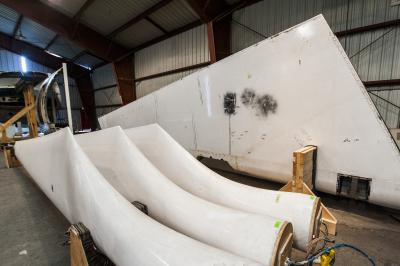Since wind energy is increasingly seen as a sustainable alternative to fossil fuels, reducing greenhouse gas emissions, estimates put its contribution to total world energy at 20% by 2050, but the rapid expansion of wind farms has raised concerns about the impact on wildlife.
Noise from pile driving during offshore wind turbine construction was found to be damaging the hearing of harbour seals around the UK in 2015, according to ecologists who attached GPS data loggers to 24 harbor seals while offshore wind turbines were being installed in 2012. They found half of the tagged seals were exposed to noise levels that exceeded hearing damage thresholds.
A recent detailed study published in Energy Science, provides comprehensive data on how turbines affect bird populations, especially on some breeding birds. However, the study based in the United States also suggested some way to avoid the impact suggesting wind turbine design and placement. The study included 1,670 wind turbines and 86 bird observation routes across 36 states from 2008 to 2014.

Madhu Khanna, professor of agricultural and consumer economics in the College of Agricultural, Consumer and Environmental Sciences at the University of Illinois, said, "We found that there was a negative impact of three birds lost for every turbine within 400 meters of a bird habitat. The impact faded away as distance increased."
As per the estimate, about 150,000 birds are affected by wind turbines in the US every year but for grassland birds, the researchers found fewer negative impacts than for other types of breeding birds. After analyzing data on wind turbines, breeding birds, land use, and weather across the United States over a six-year period, the study came up with interesting suggestions.
"We compared bird routes that were close to turbines with those that were further away, making it possible to more easily and precisely identify the impact of the turbine, while controlling for other unobservable factors," explained Ruiqing Miao of Auburn University and lead author on the study.
The researchers found that taller turbines with shorter blades reduce the impact on birds. In the past, some studies have found that turbine height was negatively correlated with bird count, but the present study separated height from blade length and found length to be the more important. Since the impact on birds diminishes as the distance increases, the researchers suggest that wind turbines be placed outside a 1,600 meter buffer zone of high-density bird habitats. They also recommend that turbines be taller but with shorter blades.









